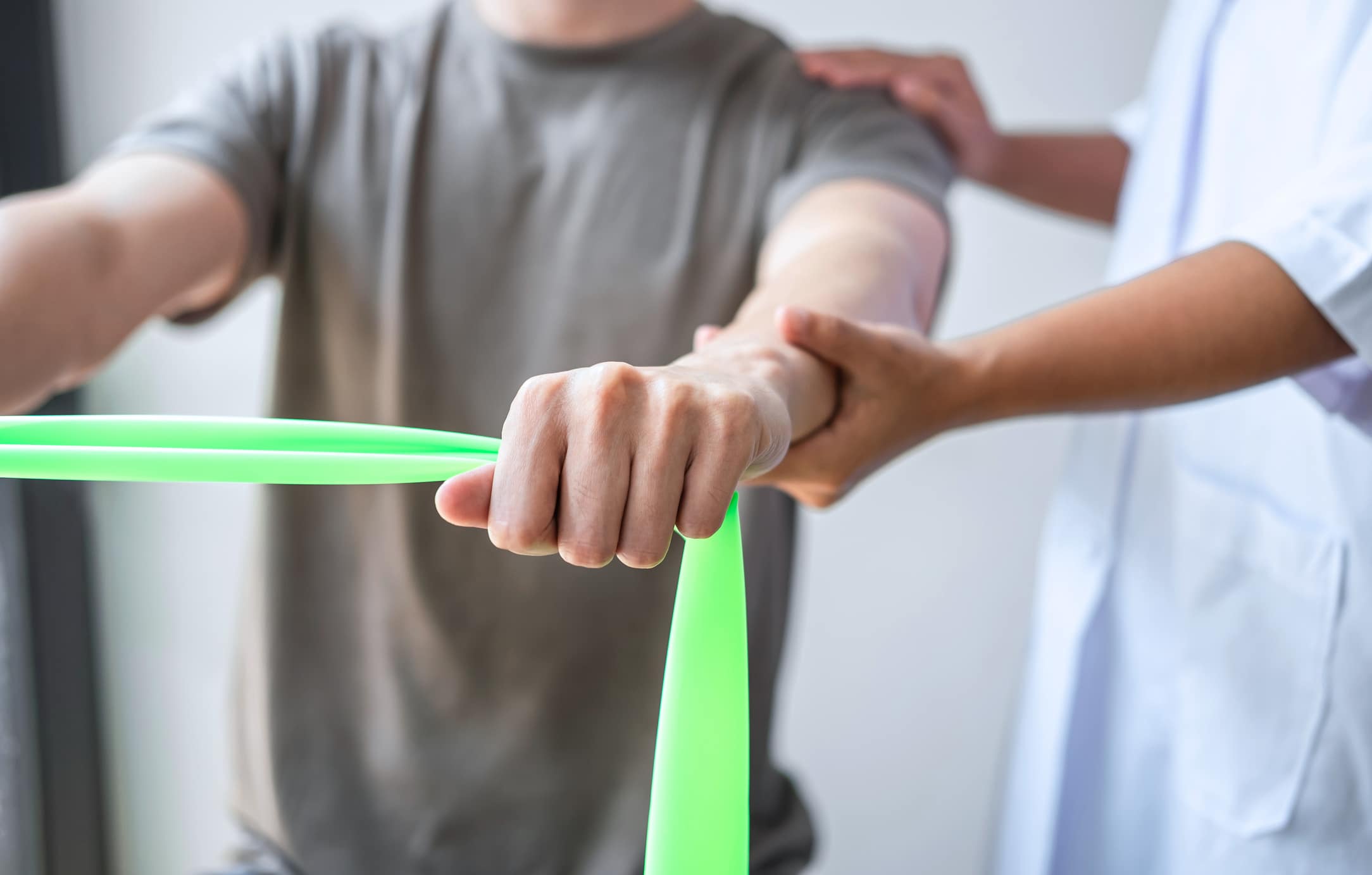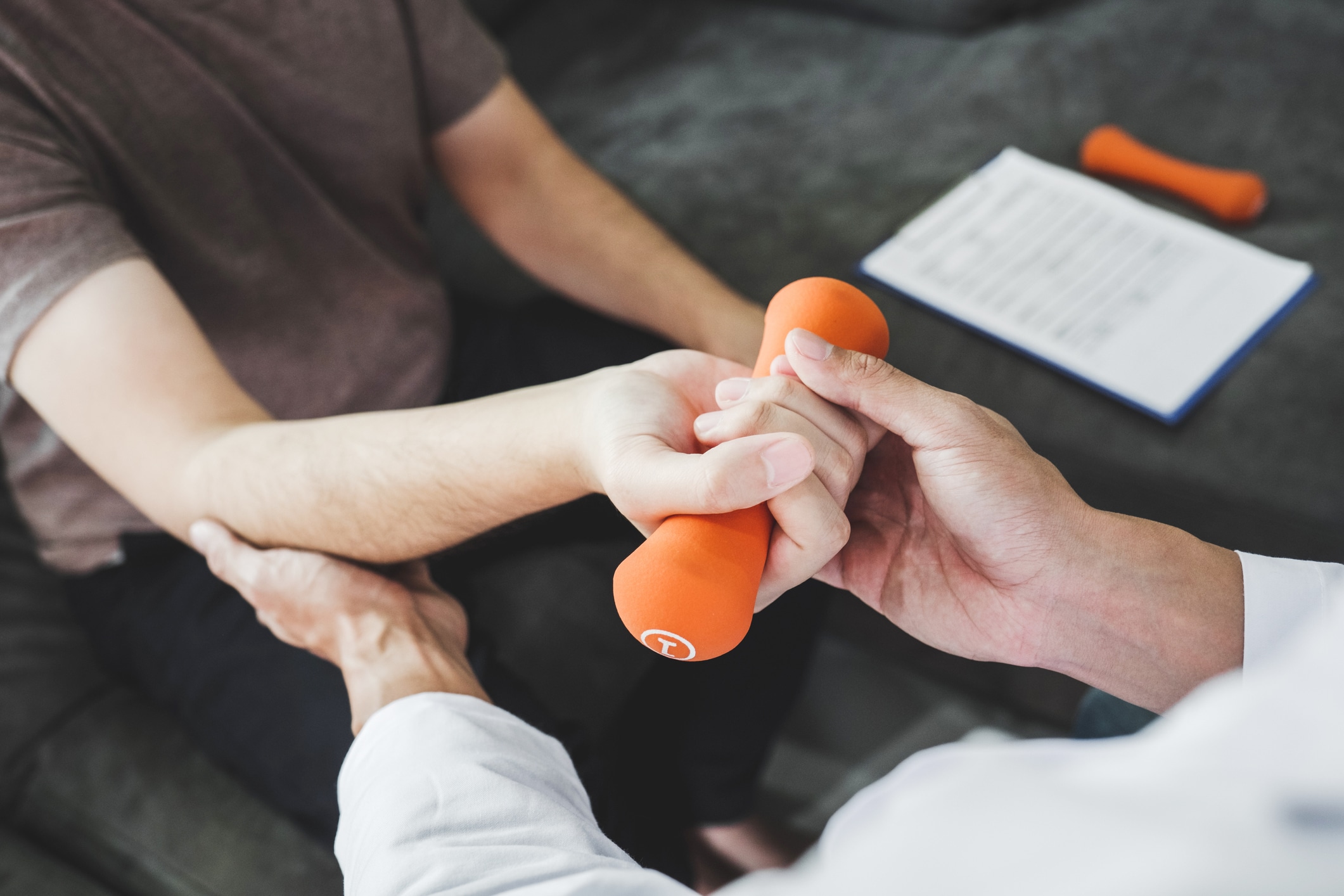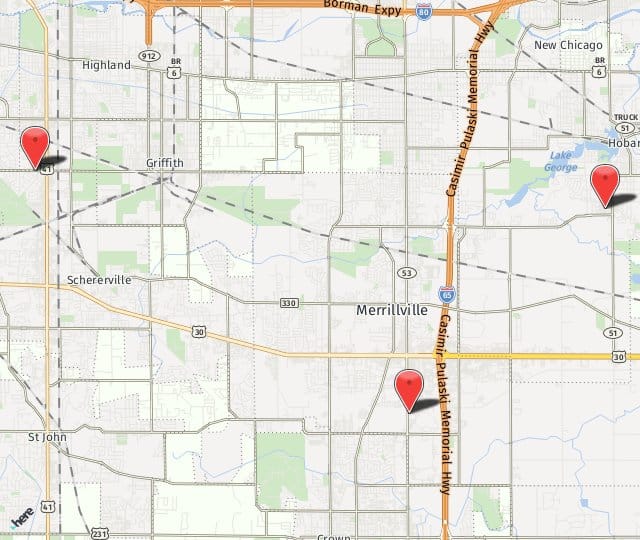
Our rehabilitation department has a joint venture with one of the top physical therapy organizations in the United States, ATI, together bringing you quality, trusted care, excellent expertise and remarkable outcomes.
Ready to Find Out More?
Call us or visit us at any time to learn how we can help you!
What is the difference between occupational therapy and physical therapy?
Both physical therapy and occupational therapy are hands-on modalities that help support clients’ independence to perform everyday tasks, each takes a unique approach to doing so. The difference between these two therapies is that one focuses on improving a person’s ability to perform daily activities while the other focuses on improving the movement of the body.
Our occupational therapists treat the whole person, regardless of whether they are recovering from an injury or have a cognitive or developmental disability. Any disability can affect motor skills, behavior, or emotions. Occupational therapists help people navigate the effects on their lives so they can engage more fully. This form of therapy looks not only at a person’s participation in various activities but also in their environment and role in those activities and beyond.
Our physical therapists treat specific impairments of the human body. This form of therapy focuses on biomechanics, how the body moves through space. Physical therapy seeks to decrease pain, increase support for bones and joints, and thereby improve mobility and quality of life.
Bone and Joint Physical Therapy
Our highly skilled therapists provide treatments for a wide array of physical impairments including conditions of the foot and ankle, knees, hips, hands, elbow and shoulder. Our therapists are experts in the evaluation and treatment of conditions that range from simple to complex – including work-related injuries, work conditioning, post-surgical rehabilitation, and nonsurgical orthopedic injuries. We also provide on-site custom splints and brace fabrication along with evaluation and fitting of lower extremity sport and arthritic bracing.

We also treat chronic pain disorders, offer pre- and post-operative education and rehabilitation, job simulation and performance assessment and injury prevention education.
Who is a Good Candidate to Have Physical Therapy?
Just about anyone we see at our four Bone & Joint Specialists locations is a good candidate for physical therapy. Physical therapy is a crucial part of post-operative recovery for patients. This is necessary to help the patient regain range of motion, strengthen the surrounding tissues back to their pre-surgery levels (if not better), and shorten recovery time and improve final outcomes.
But physical therapy can also be the perfect treatment for overuse injury patients, such as those with tendinitis or bursitis. For these patients, PT would be just one of the conservative treatment options we would use.
The reality is most of us would benefit from physical therapy regardless of their status as a patient at Bone & Joint Specialists. Gaining flexibility, strengthening muscles, learning more beneficial movements, and myriad other assets provided by physical therapists help just about all of our patients.
Conditions That Physical Therapy Treats
Most of our Bone & Joint Specialists patients understand the role that physical therapy will play after a surgery such as a knee replacement. They know physical therapy will be needed to regain range of motion, to strengthen the surrounding muscles involved with the joint, and to improve overall outcomes.
But physical therapy is also one of the many conservative treatment options we use before heading down the road to surgery. For instance, patients with bursitis and arthritis respond well to stretching and strengthening exercises, as well as training with their basic posture and their mechanics of certain movements that are causing them chronic pain. Patients with joint pain can sometimes avoid surgery, or at least postpone it, by strengthening the surrounding support musculature through physical therapy. Overuse injuries respond to PT particularly well.
We also use physical therapy prior to surgery in many cases. This can improve the patient’s flexibility and increase their muscle strength prior to their surgery, which can improve the outcome and speed recovery.
And, of course, anyone having orthopedic surgery with us will see a physical therapist at some point in their recovery.
How Long Does a Physical Therapy Session Usually Take?
Physical therapy sessions typically last 30-60 minutes each. Their frequency varies with the patient and the condition.
How Long Will the Results From My Physical Therapy Last?
The results you achieve by diligent physical therapy, whether it is provided by a physical therapist or whether you are continuing the exercises afterwards, depend on a few variables. For instance, a muscle you strengthen around your knee today could stay strong the rest of your life, if you continue to exercise and strengthen it. But if you don’t it will lose its strength.
The role of PT for our Bone & Joint Specialists patients is important for improving the end result after surgery. The range of motion that is regained following a shoulder surgery, for instance, is permanent, and that is because of your PT regimen. The strength gained in that same shoulder will depend upon you to maintain it for the long haul.

Physical therapy that we use to overcome something like tennis elbow can also create permanent results, but you’ll likely have to continue some of the strengthening exercises to make this the case. You may also have to adopt the changes in technique that created the overuse in the first place.
Are There Any Risks Associated With Physical Therapy?
Our joint venture with our physical therapy provider was predicated upon their quality of care. Our physical therapists deliver high levels of supervised care to help our patients. While there is some risk when performing some of the exercises, such as falling, these are mitigated by the supervision of your physical therapist. Of course, when you’re performing some of these stretches and exercises in your home, you won’t have that supervision, so you need to use the proper amount of caution.
Physical therapy can leave you sore. It can worsen some pre-existing conditions, at least for a time. There can be risks involved with increased heart rates and blood pressure, but these are monitored closely.
The real risk involved with PT with orthopedics is not following the advice given. For instance, the best way to ensure your recovery from knee replacement will be more difficult is not diligently following the advice given by your physical therapist. Missing sessions, lackadaisically performing exercises and tasks, and the like only circumvents the help they are trying to provide.
What Should I Expect in a Physical Therapy Session?
During your initial physical therapy session, you can expect your therapist to learn more about your injury. A brief consultation and physical examination may include range of motion measurements, palpation of the injury, functional mobility testing, strength testing, and other screenings. Once your initial consultation and examination have been completed, a personalized treatment plan may include various modalities.
Therapeutic modalities included in physical therapy sessions may vary from one visit to another and may involve:
- Ice
- Heat
- Hydrotherapy (water)
- Ultrasound
- Laser
- Electrical stimulation
Mobilization and massage are also important modalities that physical therapists may use. These hands-on therapies can promote blood flow and relieve pain. The therapist may move the joints and muscles to increase flexibility and range of motion.
Exercise is a foundation of physical therapy. Each client is prescribed specific exercises and stretches that are designed to help them move better and feel better. Some physical therapy exercises use equipment such as a treadmill or stationary bike. Some involve specific movements and weight-bearing exercises that can be done at home after demonstration and practice in the office. Optimal results are achieved when clients perform their prescribed exercises in between physical therapy sessions.

How Can I Prepare for My Physical Therapy Sessions?
Your only real preparation for your PT sessions is to prepare yourself to be an active participant. Plan on being “all in” on the exercises, stretches, and other parts of your session. You’ll need to wear comfortable, loose-fitting clothing. You’ll likely need to wear sneakers or the like for footwear. Prior to your first session, your therapist will discuss what you can expect and what you’ll need to do to prepare.
Will I Be Sore After My Physical Therapy Session?
Physical therapy sessions are conducted with a specific plan in mind. That plan is determined by each person’s specific needs. Sometimes, building strength requires relatively tough training. It pushes, but not too much. After physical therapy, it is possible that you may feel sore. Several factors influence this, including your daily activities, body type, and habits. Over time, as strength and flexibility improve, soreness should decrease.
Is Bone and Joint Physical Therapy Painful?
Although physical therapy can be relatively hard at certain points, it shouldn’t hurt. Our trained physical therapists maintain a safe and productive environment that aims to achieve the best results for our patients. Various therapies, such as deep massage and certain exercises, depending on your physical state, may be uncomfortable. Communicate sensations with your therapist so they can assist you in completing your exercises and therapies as comfortably as possible.
How Does Physical Therapy Differ For Elderly Patients?
The modalities involved in physical therapy are consistent across the board. Patients of all ages can benefit from them. However, the treatment plan developed from one patient to another is modified based on their needs and physical or cognitive limitations. Physical therapy has helped elderly patients with physical injuries, degenerative disease, and also with limitations brought on by conditions such as Parkinson’s and Alzheimer’s disease.
How Many Physical Therapy Sessions Will I Need?
The number of physical therapy sessions a person needs is dependent on their situation. Our therapists customize each course of treatment to achieve the best possible results for each of our patients. It is important to keep in mind that physical therapy is a commitment that extends beyond the clinical setting. Patients also need to follow exercise protocols at home to achieve the intended outcome of their treatment plan.
Occupational Therapy
Our occupational therapists work intimately with the physicians to comprehensively treat patients from evaluation to discharge. Our highly skilled occupational therapists design and implement customized treatment plans which may include orthotic design and fabrication, wound care, scar management, exercise, manual therapy, sensory re-education, work conditioning, and patient education.
Hand Therapy
The Hand Therapy Certification Commission adopted the following definition and scope of practice for hand therapy:
Hand therapy is the art and science of rehabilitation of the upper limb, which includes the hand, wrist, elbow and shoulder girdle. It is a merging of occupational and physical therapy theory and practice that combines comprehensive knowledge of the structure of the upper limb with function and activity.

How Does Hand Therapy Work?
Using specialized skills in assessment, planning and treatment, hand therapists provide therapeutic interventions to prevent dysfunction, restore function and/or reverse the progression of pathology of the upper limb in order to enhance an individual’s ability to execute tasks and to participate fully in life situations.
Why Choose Bone & Joint Specialists
Through continuing education our therapists employ the latest evidence-based treatment techniques to ensure that our patients receive the most current and effective treatment available. Our Occupational Therapy department is committed to the welfare of each and every patient, firm in the belief that true healing involves the whole person.
What People Say About Us!
"Dr. Schwartz was great. Listened, and explained everything. Excellent surgeon with a great bedside manner. Was very pleased with my results.”
Click here to read more reviews.
Schedule A Consultation
To learn more about our Physical Therapy services, call us today at 219.795.3360 to schedule a consultation. Bone & Joint Specialists Orthopedic Center is proud to serve Merrillville, Valparaiso, Highland, and Hobart, IN.


